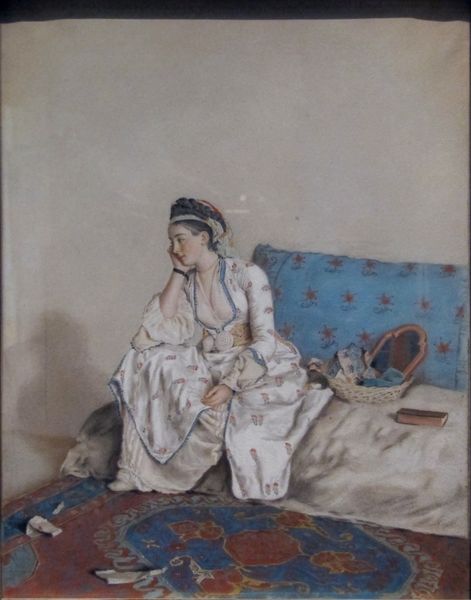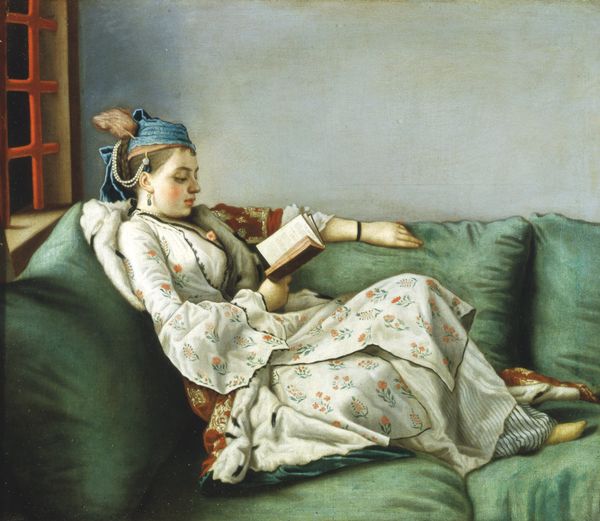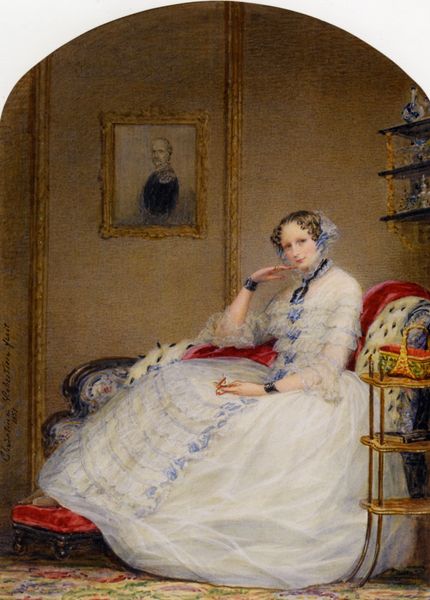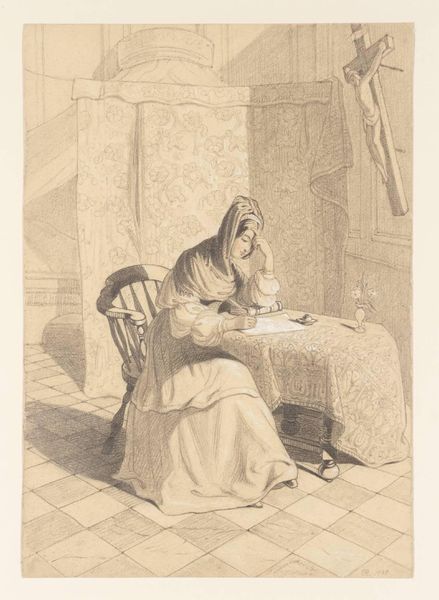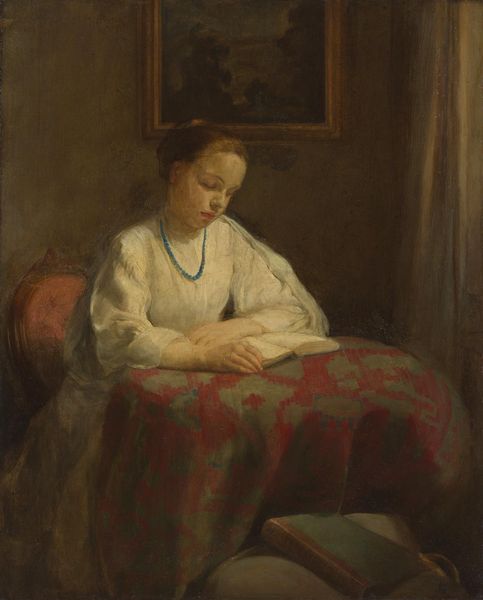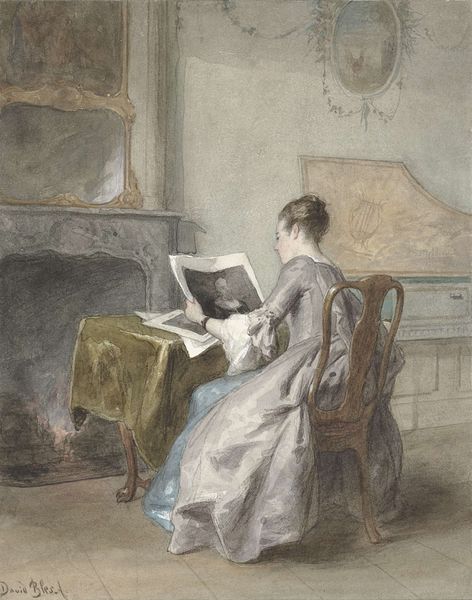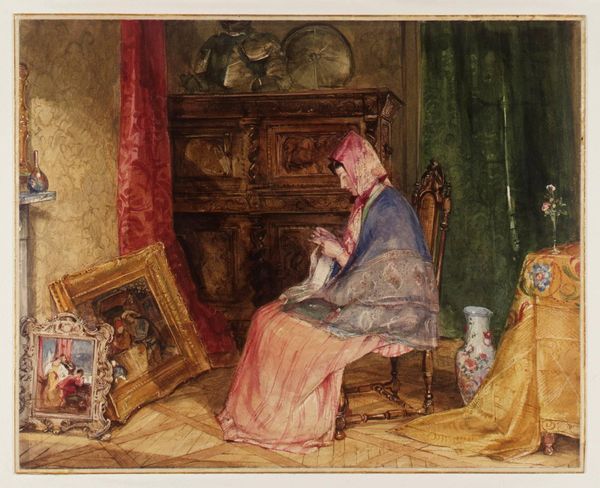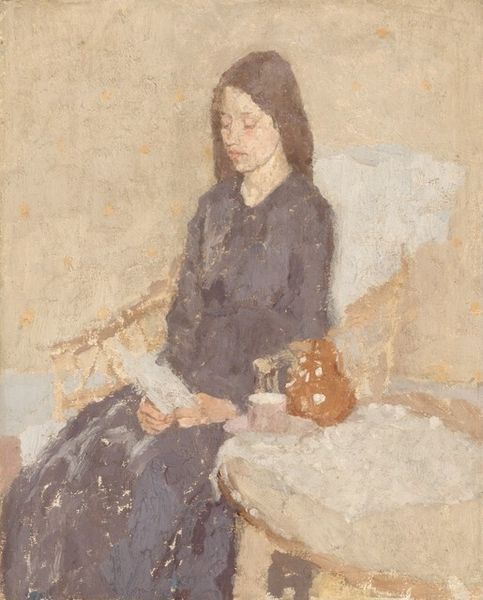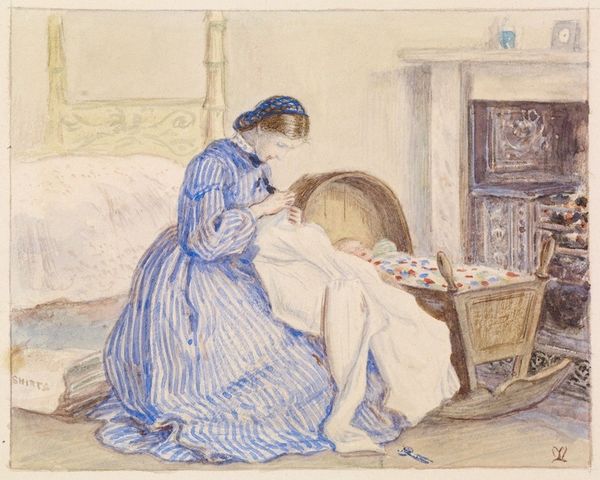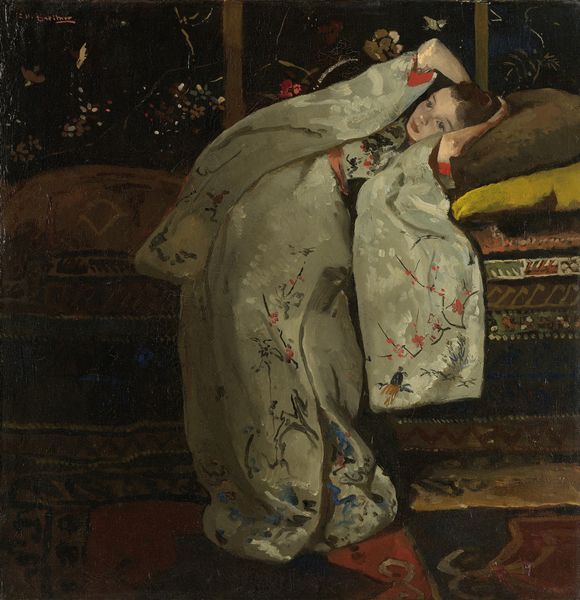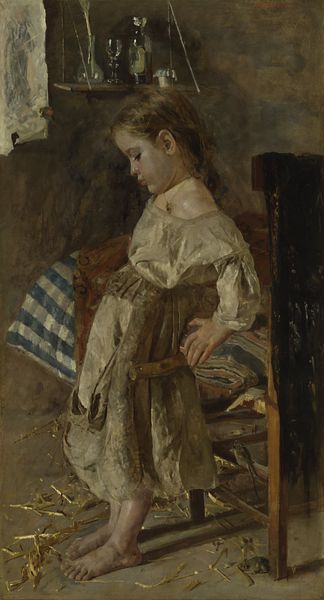
watercolor
#
portrait
#
water colours
#
watercolor
#
watercolour illustration
#
genre-painting
#
watercolor
#
rococo
Dimensions: height 103.8 cm, width 79.8 cm, weight 14.1 kg
Copyright: Rijks Museum: Open Domain
Curator: Here we see Jean-Étienne Liotard's "Marie Fargues, the Painter’s Wife," rendered between 1756 and 1758, currently residing here at the Rijksmuseum. What strikes you first about this watercolour piece? Editor: A profound sense of melancholic contemplation. The muted palette, combined with her posture—head resting on her hand—evokes a feeling of wistful pensiveness. Curator: It's a compelling capture of the sitter's internal state. Beyond the aesthetic appeal, this portrait reveals insights into 18th-century societal dynamics and Liotard's strategies for patronage and reputation building in artistic circles. Editor: Absolutely. Observe how her clothing, with its exoticizing patterns and details, plays into the era's fascination with the Orient. But more deeply, notice the mirror and scattered clothing; symbols suggesting identity formation and the multifaceted role of women. Curator: Indeed, the “Turkish” attire isn't necessarily a realistic portrayal, but a nod to a prevailing artistic trend, a brand utilized to showcase Liotard’s stylistic adaptability within elite cultural spaces. Her position as "the painter's wife" is itself a significant marker, reflecting the limitations imposed on women, yet still imbuing her with a certain elevated status. Editor: And these floral motifs are never neutral either! The orientalizing trend itself becomes a way to symbolize her imagined self; it represents escape, dreams, something more than just daily existence, but idealized through the symbolic trappings of what Europe imagined the "Orient" to be. Curator: Precisely. It serves to remind us that representations, especially of women, are never objective, but mediated through power relations and cultural assumptions. This watercolor invites us to question who holds the power of definition and why. Editor: This has illuminated Liotard's talent for portraying surface reality and inner life! Thank you for unpacking it in context. Curator: And to you, for unveiling its deeper psychological symbols. A worthwhile inquiry, indeed!
Comments
rijksmuseum about 2 years ago
⋮
Liotard was already 54 when he married the 29-yearold Marie Fargues in Amsterdam in 1756. This extraordinary portrait – it is one of Liotard’s largest pastels and necessitated the use of two pieces of vellum – was probably done shortly following their wedding. Liotard chose a composition he had first used in a drawing made in Constantinople and had repeated several times in different contexts: it was, indeed, one of the most famous inventions of his persona as ‘Le peintre turc’.
Join the conversation
Join millions of artists and users on Artera today and experience the ultimate creative platform.
